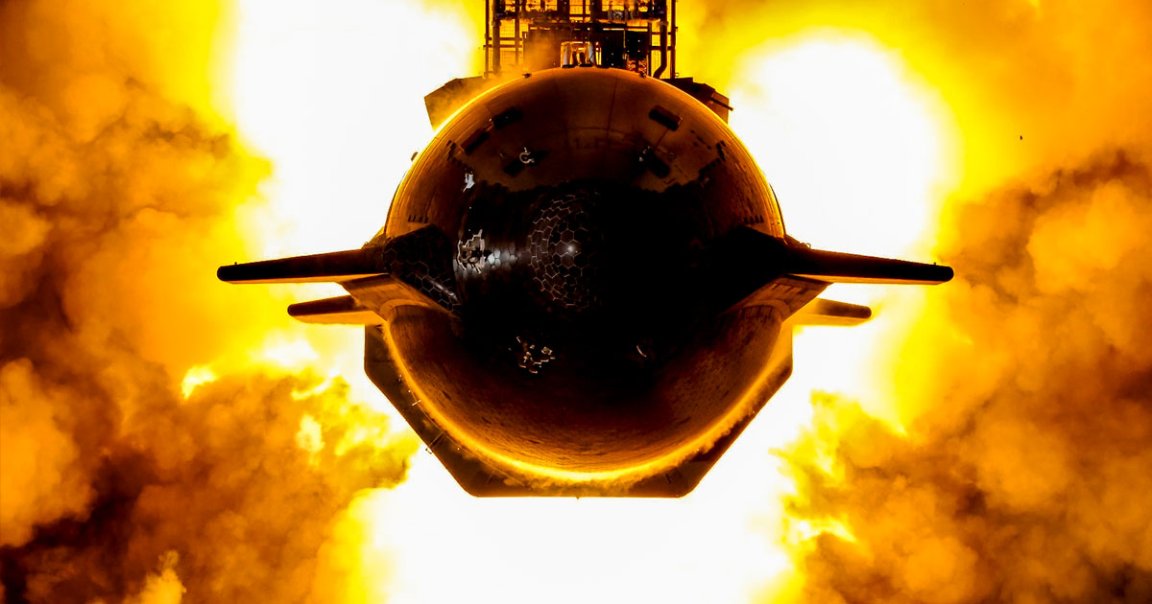
Fired Up
Earlier this week, SpaceX fired up the engines of its latest Starship prototype, dubbed Ship 28, setting the stage for the company’s third orbital test launch.
While we still don’t have a date for “Integrated Flight Test 3,” the Elon Musk-led company is pushing ahead and has rolled out the accompanying rocket booster, which will — if everything goes according to plan — lift Starship into orbit.
The stretch goal is to have the massive 165-foot spacecraft make a controlled landing in the ocean north of Hawaii. But given the company’s preceding attempts, that’s as ambitious a goal as ever.
Trying Again
On April 18, the company conducted its first test flight, ending in a massive explosion roughly 24 miles above the company’s testing facilities in South Texas.
Last month, the company tried again, reaching a height of 90 miles. Unfortunately, the rocket blew up yet again, ending the planned 90-minute mission prematurely.
As Ars Technica points out, Musk has yet to provide any clarification as to what went wrong, but did outline several upgrades for the next Starship iteration.
“Version 2 of the ship holds more propellant, reduces dry mass, and improves reliability,” Musk tweeted last month.
When SpaceX will try again remains unclear, especially considering the company has yet to receive the green light from the Federal Aviation Administration.
“It would be great if we were in the first quarter, definitely,” SpaceX’s general manager Kathy Lueders told reporters over the weekend. “Elon obviously would probably say the end of December, but I don’t think we’ll get there.”
Will the third time be the charm for the space company, or will we witness yet another “rapid unscheduled disassembly,” the company’s tongue-in-cheek terminology for a violent explosion? We can’t wait to find out.
More on Starship: Elon Musk Unveils Plans for Next Version of Starship